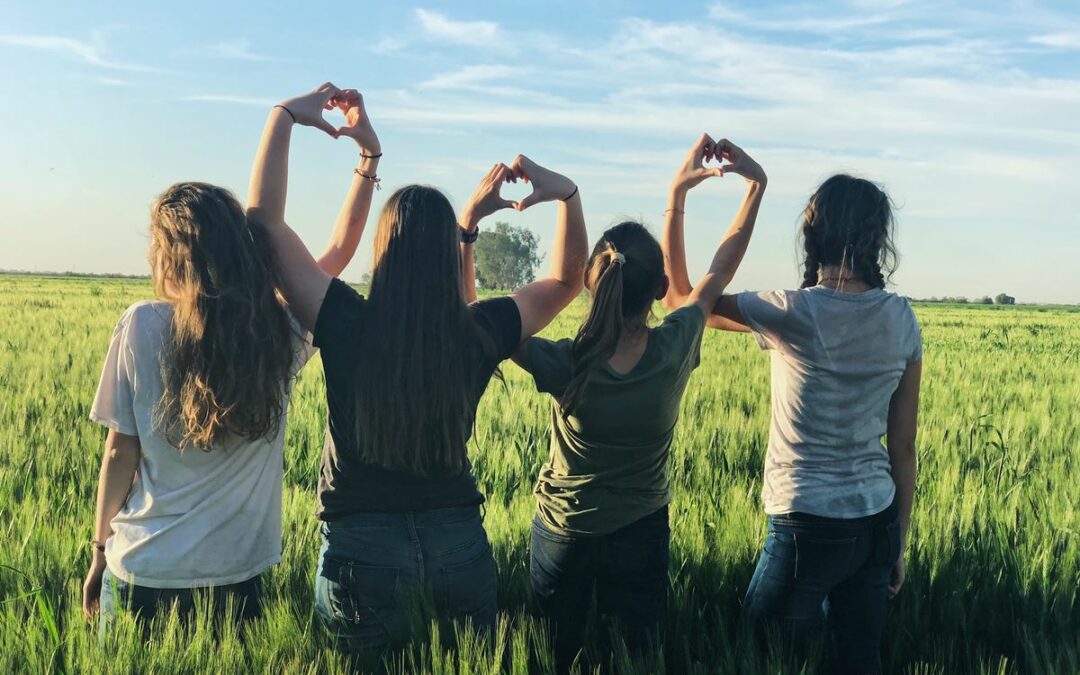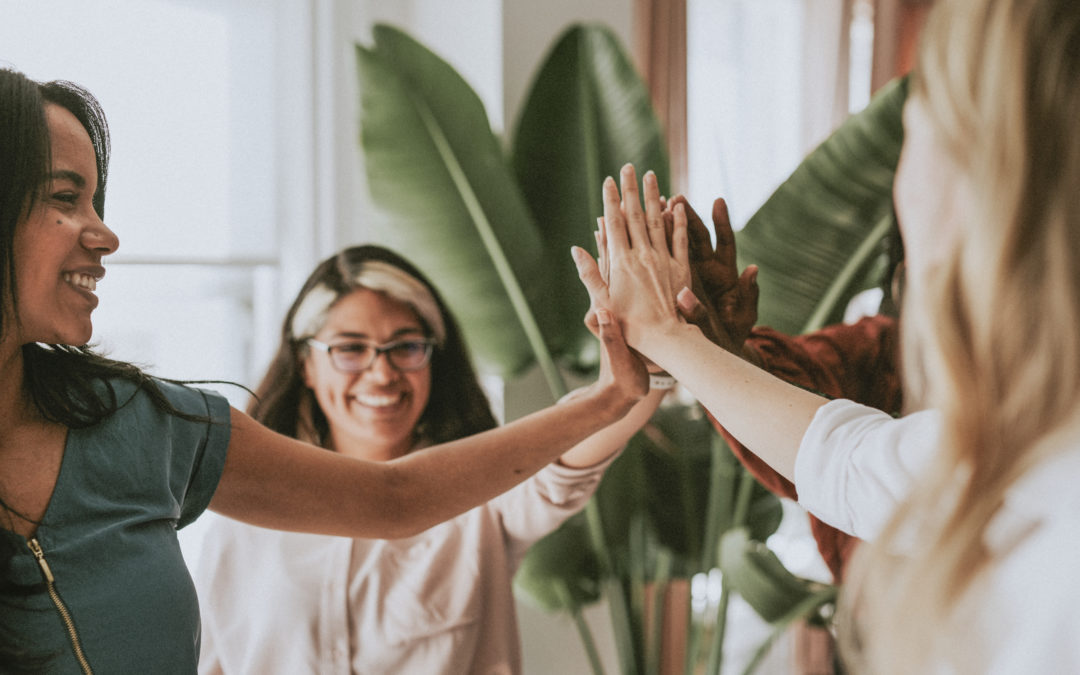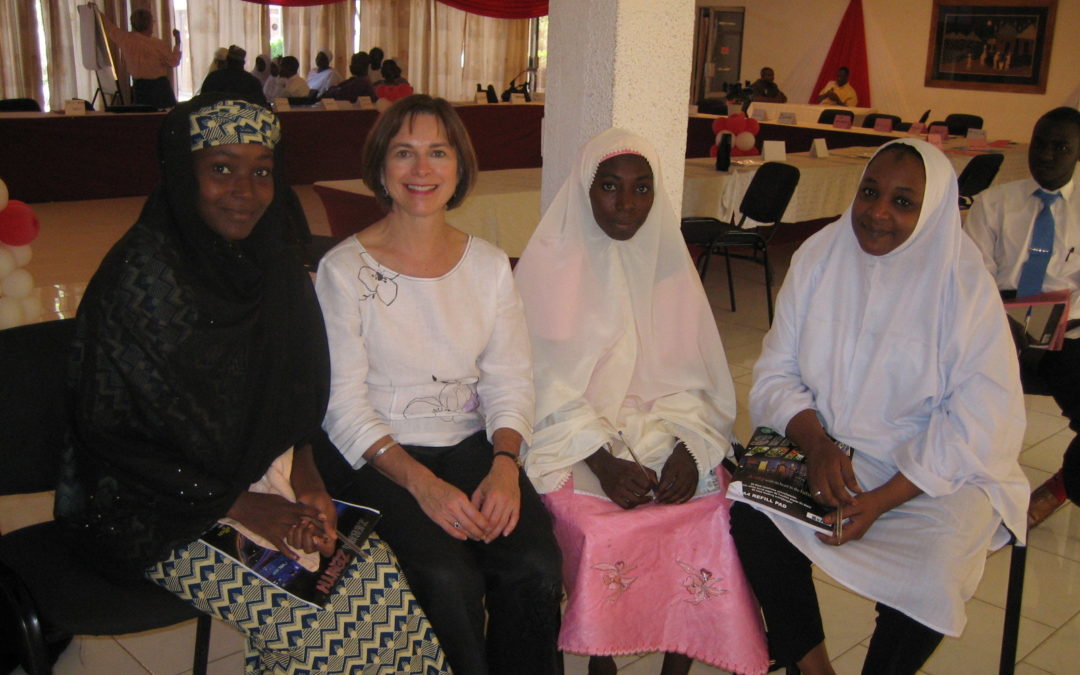
by pam | Jun 13, 2023 | Benefits of being in nature, Collaboration, Feminine Leadership, Health & Wellbeing
It was about six weeks into the pandemic; a scary and uncertain time. Then came the news of air pollution levels over China drastically decreasing and dolphins returning to swim in the canals of Venice! Two powerful indicators of nature showing us how she can heal herself and ways we can contribute to healing the planet.
I’ve been interested in nature since a child and feel blessed to now live 10 minutes’ walk from the ocean and about 10 minutes from a beautiful park. That said I’ve never studied much about the environment, sustainability, or regenerative agriculture until recently. These powerful examples from nature encouraged me to want to learn more and find out how I could contribute to improving the health of the planet.
I run a national, member-based non-profit Female Wave of Change Canada. We are part of a global social movement, Female Wave of Change , now in over 40 countries around the globe. We believe feminine leadership holds the key to creating a better world; a more conscious, equitable, just, sustainable, and peaceful one. We work in five pillar areas: education, environment, economy, health, and humanity. Inspired by these two powerful examples from nature, I put a call out to members in late June of 2021 to invite them to be part of a team to co-create a project related to the environment. The caveat was they needed to have an interest in and/or be passionate about the environment. They didn’t need to be a subject matter expert and if they were that was a bonus. Five members responded to the “call”, one being a subject matter expert. In less than six months via zoom, we co-created the Mother Earth Ambassador Program[1], an experiential, outdoor education program to teach girls ages 9 to 12 about Mother Earth, the Mother Tree, and how to become Ambassadors for Mother Earth in their homes, schools, and communities.
We reviewed a number of articles and books, as well as videos and programs on nature, the environment, and sustainability and decided to focus on the forest. We were strongly influenced by the work of Suzanne Simard, a forest ecologist at the University of British Columbia and her research on the Mother Tree. She discovered that there are hub trees in the forest and called them Mother Trees as they display many characteristics of nurturing mothers such as when a tree is experiencing unhealthy conditions such as insufficient nutrients, the Mother Tree communicates through the mycorrhizal fungi in the soil to other trees to support young and unhealthy trees even if they are of another species. The Mother Tree exhibits qualities of feminine leadership our organization promotes such as inclusiveness, collaboration, and creativity to name a few.
Girls aged 9 to 12 are the leaders of the future and teaching them about the Mother Tree, Mother Nature and how to become Ambassadors strengthens their confidence to make wise choices during a pivotal time in their lives. During the program, each girl develops a personalized action plan to create positive change for the earth in her home, school and/or community.
We are currently accepting applications for a cohort of eight girls starting in Metchosin on Vancouver Island on September 23 running for eight Saturdays until November 18. The program is being facilitated by Sarah Wade a certified elementary and middle school teacher with much experience teaching outdoor education including living and working with indigenous elders and youth in Nunavut.
We have a big vision for the program. We plan to develop partnerships with organizations who serve girls ages 9 to 12 to deliver the program across Canada and beyond. To support this vision, we need funds to create a train-the-trainer program that will augment the detailed facilitator’s guide and overall program design we developed with the support of a gifted curriculum development consultant Tiana Fech.
If this program “strikes a chord” with you, there are three ways you may support it:
- Share the program details with families you know with girls aged 9 to 12 who live in the Greater Victoria, BC area who you think might be a good fit, and encourage them to consider applying – https://fwoccanada.com/mother-earth-ambassador-program/
- Donate or become a sponsor for the program (Note that we receive no funds from the parent organization and all of our programs and initiatives are supported by memberships, donations, and sponsors) – https://fwoccanada.com/donate/
- Contact info@fwoccanada.com if you are aware of or belong to an organization who would be interested in learning more about delivering this program in your/their community.
[1] I would like to acknowledge Dave Best, CEO, Vanilla Blossom (sponsor), Tiana Fech, those members of FWOCC who donated to the initiative and the 5 members of the team who “birthed” the Mother Earth Ambassador Program with me: Rita Fromholt, Laureen Card, Donna Fairhurst, Charmaine Hammond, and Carolyn Pisani.

by pam | Apr 5, 2022 | Collaboration, Healthy Organizations, Leadership, Women in Business
How do you tap into, gather and recognize the wisdom in your teams, clients, organization?
Years ago, while working for the federal government I recall being perplexed by the fact that many people were hired for their experience, credentials, and expertise, and yet when they got into position, this wisdom and experience was rarely tapped into or openly recognized and valued. How often do we want to have qualified and experienced people join our ranks and then when they get into position not really enable them to share that wisdom?
In these times of uncertainty when we have complex issues such as climate change and systemic racism to solve, we need multiple disciplines and “heads” around the table, and processes that value this wisdom-sharing and enable people to contribute in meaningful ways.
How do we create environments that enable us to gather and share our collective wisdom?
Having lived and worked on 5 continents with various levels of government, non-profits, academic institutions, and vulnerable groups such as injection drug users and sex trade workers, I know that people from all walks of life have wisdom to share. Often people closest to a problem can provide the best solutions. I recall facilitating a group in an area of multi-generational poverty as part of the participatory evaluation of a child poverty project, and one participant stopping chewing (as we served dinner as part of the group). I asked “John” what made him stop eating and he said, “This is the first time anyone has ever asked for my thoughts or opinion on anything.” Telling! How often have we missed opportunities to ask questions to people who understand the issues and have wisdom to share?
At Female Wave of Change (FWOC) Canada we believe that “authentic feminine leadership qualities (which men as well as women can have and learn) hold the key to creating a better world; a more conscious, equitable, just, sustainable and peaceful one” – https://fwoccanada.com/about/.
A recent member benefit we have added is “Collective Wisdom Circles”. They are groups of maximum 10 participants including the facilitator that currently meet once a month for 1.5 hours. The objectives of the Circles include:
- An opportunity to share wisdom and learn from each other in community.
- An opportunity for learning and growth.
- Creating a safe space for women to come together and share insights and actions that can be used in our broader lives and communities.
The facilitator changes each time we meet and at the end of each Circle we reach consensus on who will take the lead at our next Circle. The focus theme of our current Circles is: “Dealing with Change and Uncertainty”.
If you’d like to join us and learn more, I invite you to register for our upcoming complimentary virtual monthly meeting for an interactive and engaging session with featured guest Dr. Cathy Key – https://bit.ly/3IhQdhW ; open to members and the public.
I invite to share below your comments and strategies you’ve found helpful to tap into the wisdom of your teams, clients, organizations.

by pam | Oct 25, 2021 | Beliefs & Values, Collaboration, Group Facilitation, Leadership, Women in Business
In a recent blog post a colleague, Runa Bouius, shared the term “co-creative collaboration”. For me it clicked and made so much sense. You may be wondering what the heck does it mean?
To co-create means “to create something jointly”.[1] To collaborate is “to work with another person or group in order to achieve or do something.”[2]
What’s the difference between the two? I believe that by adding “co-creative” to collaboration it underscores the creative aspects of the process and focuses on the positive energy and joy that results from co-creating a new program, project, initiative, organization; and the ownership one feels to the “end product”. It is a great way to bond with a team or group of individuals.
To co-create with a group, there are a number of beliefs that are important to have in place and processes that support co-creative collaboration.
Beliefs that support co-creative collaboration
What I’ve found from my work with people from a variety of cultures and backgrounds is that it is important to believe that the whole is greater than the sum of the parts. In other words, you believe that the chances of creating something new and innovative are much greater when you have variety of different perspectives and “heads” around the table, than what results from your own mind or from a small group who represent similar backgrounds (e.g. disciplines) and/or cultures.
I admire how Barbara Gray[3], a seasoned negotiator and organizational theorist, wrote about collaboration. She likened the collaborative process to a kaleidoscope and the pieces of colored glass within to the various diverse stakeholders involved in such a process. When you turn a kaleidoscope, the image changes, and a new one is created each time. Similarly in a well-designed collaborative process, each stakeholder is enabled to share their ideas and the final “product” the group comes up with is a combination of each person’s unique contribution; yet it is even better as each person builds on the next and the whole becomes greater than the sum of the parts.
Many of us begin our careers believing that we have all the answers, and it is easier to create something on our own rather than to involve others. We don’t really value collaboration until we experience a well-designed co-creative collaborative process.
Processes that support co-creative collaboration
In the late 1980s and early 1990s, I had the opportunity to co-chair a national strategy for the federal government. The consultant we hired to support us through that process was a gifted facilitator, Dorothy Strachan, who taught me so much. The strategy was “Enhancing Prevention in the Practice of Health Professionals” and it involved representatives from 8 national health professional associations in Canada; for example the Canadian Medical Association, Canadian Nursing Association, Canadian Dental Association … . Through a multi-phased process, we created a strategy document that supported integrating prevention through four key issue areas: policy and planning, program and service delivery, education of health professionals, and research and evaluation. The final “product” was endorsed by the Boards of each of the health professional associations who were around the table. It was a landmark document that included a number of concrete actions the various professions could take that included Goals and Options for Action in each of the issue areas, and a dissemination strategy characterized by “Prevention through Partnership: Collaborating for Change”.
Being part of this process made me value collaboration and understand how a well-designed and facilitated process can be both creative and productive.
We didn’t call it “co-creative collaboration” but indeed it was.
To be part of a co-creative collaborative process you need to trust in the process, believe that the whole IS greater than the sum of the parts, ideally include a diverse group of stakeholders in the process, create a safe environment with clear expectations, respect and value the contributions of everyone, and not come to the process invested in a particular outcome, rather be open to possibility. It is helpful to engage a skilled outside neutral facilitator with experience in collaborative processes.
As part of Female Wave of Change Canada, a member-based non-profit whose vision is:
“A more conscious, equitable, just, sustainable and peaceful world where authentic feminine leadership qualities[4] are valued and underpin the creation of new and healthy organizations, structures and systems”,
I invited members to work together to co-create a project related to the Environment. In an email they were told that they didn’t need to be subject matter experts, and it was great if they were; however, having a passion for and interest in co-creating a project in the Environment area was important. Over 3 months of meeting via zoom about every 2 weeks, we co-created what is now called “The Mother Earth Ambassador Program”, an educational program for girls ages 9 to 12 that integrates indigenous wisdom and storytelling. As a group, we identified the: Problems we are solving, the broad Goal, the Outcomes/Objectives, a draft Outline, and Additional Design Aspects. We are now in conversation with a Master’s level university program and their students who we anticipate will assist us in fleshing out the program and “making it real”. If you’re interested in learning more and being part of a co-creative collaborative process, join us at: https://fwoccanada.com.
With the complex issues we are facing today, such as systemic racism, climate change, and gender inequality, we need a variety of “heads around the table” from different backgrounds and cultures to generate creative solutions and move us toward a world that works for everyone. Are you up to the challenge?
[1] https://www.thefreedictionary.com
[2] https://www.merriam-webster.com
[3] Barbara Gray, Collaborating: Finding Common Ground for Multiparty Problems. San Francisco: Jossey-Bass Publishers, 1989.
[4] Feminine Leadership Qualities include: compassionate, creative, collaborative, emotionally intelligent, authentic, inclusive … usually associated with the feminine. That said, men as well as women can have and learn these qualities.

by pam | Jul 26, 2021 | Collaboration, Feminine Leadership, Leadership, Women in Business
Recently, I was in an interactive workshop of female leaders, and a number of women voiced that they had negative feelings around the word “power”. I must confess, that was my belief for a number of years, based on my experience with leaders and leadership. However, recently I have changed my perspective around power after being energized and impressed at the way so many of the female leaders around the world responded to the pandemic. They were confident, decisive, and worked collaboratively with their teams and even consulted female leaders in other countries regarding their policies, practices and lessons learned.
The time has come for us to change our mindsets from “power over” to “power with”. Examples of “power with” include how Jacinda Ardern during the pandemic broadcast nationally to her fellow New Zealanders in her sweatshirt coming from a place of empathy and understanding, rather than command and control. How scientists from around the world banded together to find a vaccine for COVID-19 in record time, also demonstrated “power with”.
When you think of “power with”, what images does it conjure up? What does it mean to you? I see men and women standing together in a circle holding hands. I see community. To me it means admitting I don’t have all the answers and working together with others to solve complex issues and generate creative solutions. When I think of “power over” I think of a man on his own at the top of a hierarchy, making the decisions on his own from a place of ego, without seeing the need to consult with and understand various perspectives.
“Power over” is when one person or group unilaterally, usually through their political and/or financial influence, imposes their views and ways of working on others for their own gain, rather than trying to understand others and see the world through a different lens. They are threatened by new ideas and perspectives and often want to maintain the status quo that keeps them in power. They also encourage and support competition over collaboration.
The days of the Lone Wolf are over. Complex issues such climate change and systemic racism require leaders from a variety of backgrounds, disciplines, sectors and countries to solve them.
I believe that “power with”, which involves collaboration, is the way forward.
In order to collaborate it is important to:
- Believe that more than one “head” is better than one; that multiple perspectives around an issue lead to more creative and sustainable solutions
- Trust those you are collaborating with
- Be clear on your role and that of others in the process
- Have values aligned with those you are collaborating with
- Be open to new ways of understanding and looking at a problem
- Come from a place of service; of making a positive difference in the world.
What does power look and feel like for you? I welcome your thoughts and comments below on “power over” and “power with”.

by PT-clc | Apr 19, 2019 | Collaboration, Group Facilitation, Healthy Organizations, Project Design, Strategic Planning
Creating a new project? Building a new partnership?
Embarking on a strategic planning process? Building collaboration between
multiple stakeholders or between one or more teams in an organization? All of
these scenarios benefit from the skills of an experienced and skilled facilitator.
What is a professional
facilitator?
A professional facilitator is someone who has been trained
by a recognized organization and/or academic institution. In Canada, several
recognized organizations that train facilitators are: the Canadian Institute
for Conflict Resolution at St. Paul’s University – https://www.cicr-icrc.ca/en/ [1] ,
the Justice Institute – https://www.jibc.ca/
, and the Institute of Cultural Affairs – which also has an
international/parent organization – http://www.ica-international.org/.
A facilitator may also be certified by the International Association of
Facilitators – https://www.iaf-world.org/site/.
[2]
Role of a Facilitator
A facilitator’s role is to guide a group; to make it easier for a group to do its work. A facilitator takes the words and thoughts of participants and records them on a flipchart or laptop with projection. Facilitators are trained in processes to build consensus, prevent conflict and encourage creativity.
A facilitator has a strong process function versus being a content expert. Thus the role of a facilitator is not to contribute content, but rather to encourage the
active participation of all group members and to ensure that their ideas are
recorded as they stated them. In fact, people tend to get annoyed if you change
the words they give you to your own.
It is helpful when facilitating groups to understand their
“language” and the sector to which they belong. This enables you to know when
groups are “getting off track” and to more easily summarize the ideas raised.
It is also useful to encourage people to speak in “bullets” or “headlines” and
there are various processes to assist participants to do this.
An effective
facilitator is able to:
- Create a safe environment
- Listen
- Observe
- Paraphrase
- Summarize main points
- Use eye contact
- Identify and interpret non-verbal messages; e.g. frowns and
body language
- Speak clearly
- Write legibly
- Ascertain if and when a group is “getting off track” and
“bring them back on track”
Additional characteristics that are helpful to have as a
facilitator are:
- A good sense of humor
- Flexibility
- Openness
- An interest in and sensitivity to people from diverse
backgrounds
- Lots of energy.
There are many styles of facilitation and each facilitator
develops their own unique approach.
Benefits of an Outside
Neutral Facilitator
You may be a leader, project manager or changemaker who has
some facilitation expertise. If so, that is valuable. That said, it is useful
to hire an outside facilitator for the following reasons:
- They are a neutral third party and don’t have any biases or
strong affiliations with any of the involved stakeholders
- They can free you up as a leader to observe the group and
team dynamics
- They can enable you to contribute your ideas as a group
member
- They can provide a valuable “outsider” perspective on the
group and its dynamics.
The Power of
Facilitated Processes
I’ve witnessed first-hand the power of a well-designed and facilitated process. An example is while leading the design team of an international development project in Nigeria that was to be implemented in 2 states – one in the Muslim North and one in the Christian South. With the support of my team, I facilitated a process whereby the key stakeholders in each state had the opportunity to identify their current situation, vision a desired future (after 5 years of project support), identify the gaps between NOW and THEN and what support they needed to move toward their vision. The participants in each state identified someone to present their key findings to a national workshop held a week later in the capital city. My team supported each representative to prepare a PowerPoint of the key workshop outputs to present at the national workshop.
Partway through the national workshop, the
head of Policy and Planning in the Muslim state stood up and said “Brothers and
sisters, I thought we were so different from you. I believed we were not as
advanced as you educationally and that our challenges and visions would be
totally different. Hearing you present today I now realize that we are
essentially the same; you face the same challenges as we do and have a similar
vision. I am so looking forward to working together with you to turn our vision
into reality!”
Another participant stood up and exclaimed,
“This is the first conference I’ve been to in this country where students have
been together with representatives of different levels of government, health
providers and academia. Students should be here as THEY are the leaders of tomorrow!”
Such peak experiences are highlights of this
work. They make me passionate about the opportunity to design and facilitate
processes that bring diverse groups of people together, change beliefs, foster collaboration,
and create initiatives that make a difference.
In
Summary
Well-designed and
facilitated processes have the power to:
- Foster increased understanding (e.g. among different cultural and religious groups)
- Model and promote collaboration within an organization
- Create new partnerships
- Build ownership; and
- Foster creativity and innovation.
If you have a new project you’re
designing, a multistakeholder initiative you’re working on, need some visioning
or a new strategic plan, I’d love to speak with you. Please
visit https://pamela-thompson.com/process-design-facilitation/
to book a Discovery Session.
[1] Where I received my initial
training in facilitation, mediation and conflict resolution
[2] I was a member of the first group of
facilitators who were certified in Canada by the International Association of
Facilitators.




